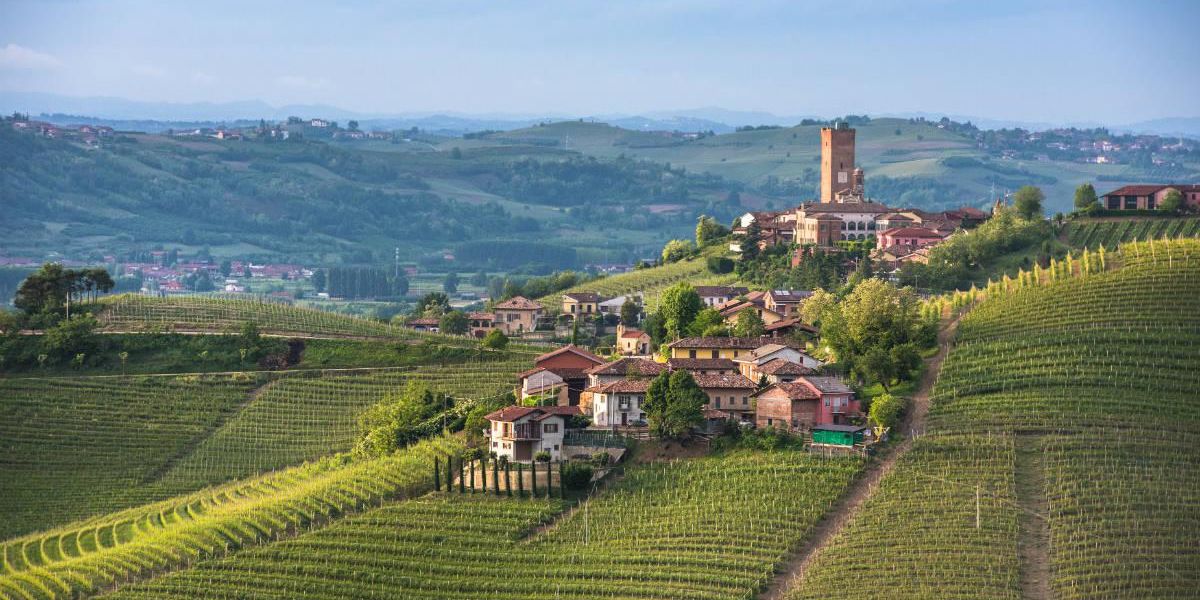
Legend has it that the Romans, great spreaders of viticulture, arrived in the territory of Barbaresco cut down the oak forests sacred to Mars and planted the vines.
The first mention of wine dates back to 1799 to celebrate the victory of the Austrian army over the French one in the plain of Genola, in the province of Cuneo.
In 1870 at Cascina Drago in San Rocco Seno d'Elvio is kept a bottle with the handwritten label "Barbaresco 1870": it is the oldest existing bottle with the citation of the wine and of the country of origin.
But the real promoter of Barbaresco as we know it today is Domino Gavazza, director of the Royal Oenological School of Alba. He buys the castle of Barbaresco with some properties and starts a proselytizing work which leads to the foundation of Cantine Sociali di Barbaresco, initially they are 10 winemakers.
The real turning point came in 1961 when Barbaresco was finally emancipated from its better-known cousin, Barolo.
Gaja of Barbaresco decides to make wine only from its own grapes, without buying from third parties. As a consequence, it renounced to produce Barolo; Barbaresco became the flagship wine for the company which, three decades later, will be the most famous "griffe" of Italian enology.
Tasting Notes
Barbaresco is a wine known for its characteristic ruby red color, intense and brilliant, which takes on garnet red reflections according to the aging period. It is a noble wine, with the distinctive traits of full-bodied reds but with a grace and a delicacy that make it less austere than a Barolo and, for this reason, definitely easier to match with food. This wine is capable of releasing rich aroma of fruit and spices that are surprising and do not impose themselves with the hardness typical of great wines.
The most characteristic notes are the ones of red fruits, green pepper, nutmeg, hazelnut and anise. The presence of wood, because of the aging in cask, can introduce a further mix of aromas which can be extended in the range of flowers, vanilla, violet and geranium.
On the palate it is persistent yet elegant, confirming its olfactory notes: the tasting opens with a smooth and satisfying warmth exploit and ends with a harmonic and well-structured finish.
Food Pairing
Perfect with this wine are Piedmontese foods, that is the ones of the territory, which better match and tell the story and the origins of this product: for dishes based on mushrooms, seasoned cheese and roasted meat, in particular red meat or poultry.
The combination with truffle is particularly recommended: a combination that binds these products in an inseparable union dictated by the regional tradition of Piedmont and the desire to explore a territory rich in unmistakable and unique notes.
Many recipes are created using this wine: from the fillet with Barbaresco, prepared with a cut of beef (better if Scottona), to the risotto sfumato al Barbaresco, where the choice of Carnaroli rice will contribute to giving consistency and body to the dish in perfect combination with radicchio, sausage, escarole or pumpkin depending on the season.







